Don't wanna be here? Send us removal request.
Text
video games!
This week the topic of discussion was gaming communities, which held many interesting examples of how video games can create digital communities. Many media platforms are intertwined with gaming communities in some way or another, examples such as Facebook, YouTube and Twitch all allow for livestreaming.
Livestreaming is a largely popular format in which viewers tune in to watch broadcasters play video games in real time, it is a unique format in the sense that it offers “broadcasters the opportunity to interact with their audiences in real time” (Taylor, 2018, p.6). Twitch.tv is the most populus site in which viewers engage with livestreaming, it is extremely popular, with over 2 million broadcasters and about 10 million active users per day (Taylor, 2018, p.3).
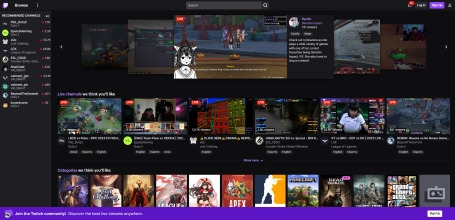
While it is an extremely popular industry, like many other digital platforms, online gaming does not come without issues, moderation procedures are in place in many video games that include online chat with other players, due to problems with offensive language and hate taking place amongst online gamers.
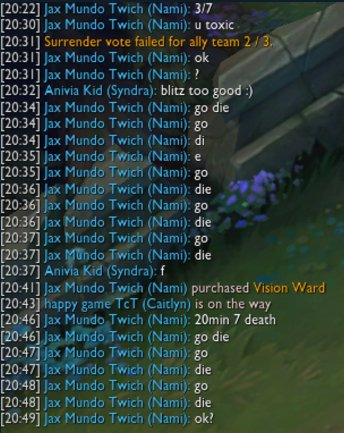
This is just as important as hate on any other platforms, as gaming reaches out to a wide range of people and as discussed in other lectures, the breeding of hate online is something that needs to be moderated by those providing the platform.
The weekly reading looked at an interesting subject related to gaming closer to our own backyard, discussing Melbourne’s indie game development scene, the author discussed the atmosphere and the development of the scene. It was particularly interesting to learn that the industry had become more of an indie scene after the closure of many studios across Australia (Keogh, 2021, p.215) and how this has helped it thrive further into a rapidly developing industry, largely due to support from organisations such as ACMI in Melbourne, which has a display on game development at the moment which I recently visited.
Video games are a largely increasing example of the way in which digital communities can be rapidly changing and growing, from its early start in broadcasted esports to its now hugely popular websites like Twitch, it remains a large aspect of the digital sphere.
References
Keogh, B 2021, 'The Melbourne indie game scenes: value regimes in localized game development' (Chapter 13), in P Ruffino (ed), Independent Videogames: Cultures, Networks, Techniques and Politics, Routledge, pp.209-222
Taylor, TL 2018, ‘Broadcasting ourselves’ (chapter 1), in Watch Me Play: Twitch and the Rise of Game Live Streaming, Princeton University Press, pp.1-23
0 notes
Text
Week 10 – Digital citizenship, online harassment and governance
Online harassment has always been a prevalent issue within the subject of digital citizenship, defined as “threats or other offensive unwanted behaviours targeted directly at others through new technology channels” (Haslop et al. 2021, p.1420. The impact of online harassment is that it negatively influences users, turning them away from engagement with digital spaces.
This week's reading analysed the subject of ‘snowflakes’ online and sought to investigate whether the implications of the term are as true as they seem, the term snowflakes has been used an increasingly popular label for those easily offended online, particularly university students (Haslop et al. 2021, p.1419). The author contends that a lack of research has led to the term being generalised and may not be as accurate as the public believes, revealing the issue of gender-based abuse marginalising women’s ability to interact with digital communities. (Haslop et al. 2021, pp.1420-1421).
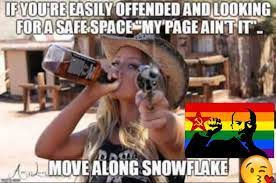
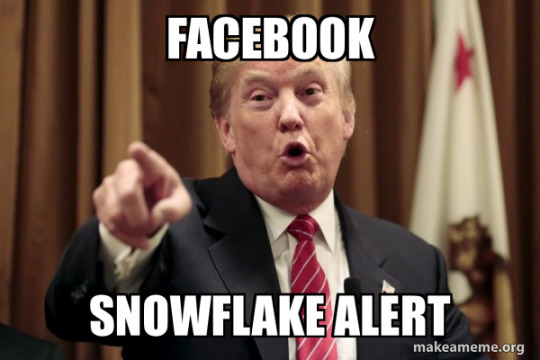
(Many cringeworthy examples can be found online showcasing the term used as a dismissive insult)
In futher reading, the idea of ‘the manosphere’ and men's rights groups online were discussed, the manosphere is seen as an online community “in opposition to the discourse and rhetoric of feminism” (Marwick & Caplan, 2018, p.553). Using Reddit as an example, subreddits such as r/mensrights are public spheres that directly oppose the importance of women’s issues.
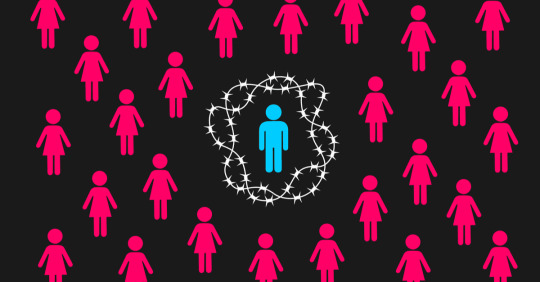
(Graphic via Internet Matters: https://www.internetmatters.org/hub/news-blogs/what-is-the-manosphere-and-why-is-it-a-concern/)
So how can this issue be combatted to encourage equality in online interaction? Social media governance is an important responsibility, falling under the providers of online platforms such as Instagram or Twitter. Many social media platforms provide guidelines to what kind of behaviour is identified as abusive or harassment.
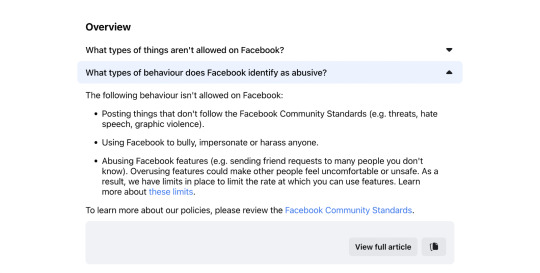
(Facebook’s guidelines on abusive behaviour, Facebook Community Standards, Meta.)
While these guidelines exist, it is clear that more work is required as there appears to be a culture of toxic behaviour, particularly towards women on social media, affecting equal representation and enjoyment digital citizenship.
Haslop, C., O’Rourke, F., & Southern, R. (2021). ‘#NoSnowflakes: The toleration of harassment and an emergent gender-related digital divide’, in a UK student online culture. Convergence, 27), 1418–1438.
Alice E. Marwick & Robyn Caplan, (2018). 'Drinking male tears: language, the manosphere, and networked harassment' Feminist Media Studies Volume 18, 2018 - Issue 4: Pages 543-559.
0 notes
Text
could anyone have predicted that the snapchat dog filter would lead to body dysmorphia?
This week’s lecture could be considered a continuation of last week’s discussions of body modification through social media, though this topic focuses more on the idea of facial modification and the standard created by filters that can both give people a full face of makeup and change the shape of their face in seconds, “enabling users to incorporate augmented reality technology into their daily sartorial practice and self-presentation” (Baker, 2020, p.208).
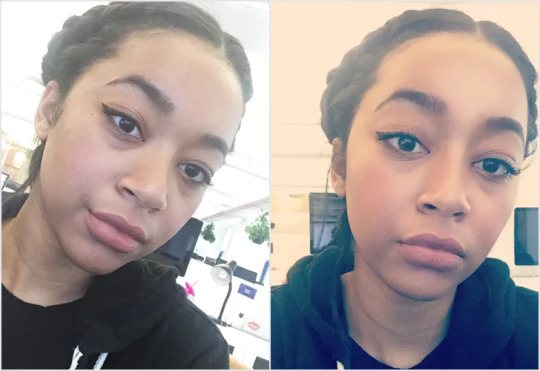
While body modification looked at photo editing, which people require some skill to pull off realistically, filters are easily accessible to everyone with social media apps, they present themselves on most platforms, though are more prevalent on Snapchat which is free and an app that many young people use. Multiple presentations this week asked students to raise their hands if they’d used a filter, each person in the class of roughly 20 people raised their hands, this shows us that filters are incredibly popular among users.
Despite it being a major part of the app now, Snapchat begun as a way of presenting authenticity, by sending images of yourself that disappear in seconds it removes any over analysis of one's image, the set reading argues that from the introduction of lenses in 2015 this was lost, and the app became more about algorithmic beauty than authenticity (Barker, 2020, pp. 210-211)
Filters began as being more entertainment based, but later became about beauty, they are shown to be quite advanced in face tracking, with some applying changes when people open their mouths or raise their eyebrows.
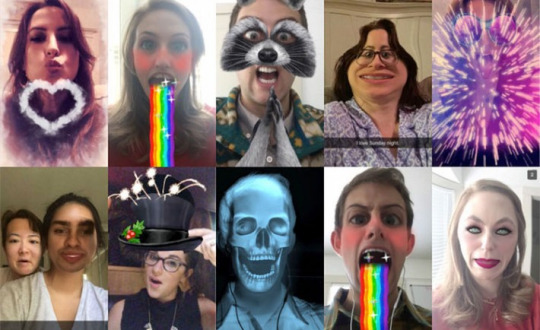
An interesting concept that was brought up by the readings was ‘Snapchat Dysmorphia’ which refers to the idea of filters creating an unrealistic body standard. Snapchat Dysmorphia has resulted in users of the app comparing themselves to the unachievable ‘perfected’ faces presented by filters (Baker, 2020, p. 216).
Much like Instagram's algorithm, demanding women have slim figures and men be toned and muscular. Filters on social media have shown to create a real problem among users through, once again, the creation of unachievable standards, with a large amount of youth on social media, the result could continue to be damaging to the self-esteem and body image of many.
References Barker, J. (2020). Making-up on mobile: The pretty filters and ugly implications of Snapchat, Fashion, Style & Popular Culture, Bristol: Intellect.
0 notes
Text
Week 7 - the beauty standard is in no way achievable!
This week’s topic was body modification on social media. The concepts involved in this are the beauty standard created by social media, photo editing and once again, influencer culture. The weekly readings discussed the idea of digital platforms control over these areas. As discussed in week 3, the internet is seen as a space of empowerment for feminism, however majority of social media is controlled by men (Carah & Dobson, 2016, p.3) this links back to the kind of body image that is created through representations of women on social media. It can be argued that through this, the algorithm on visual social platforms such as Instagram dictates what people will see, this in turn controls and creates a type of beauty standard on social media, “the primarily characteristics” of someone who is feminine are a slim curvy figure (Carah & Dobson, 2016, p.8). We can see this idea reinforced through social media celebrities such as Kylie Jenner.
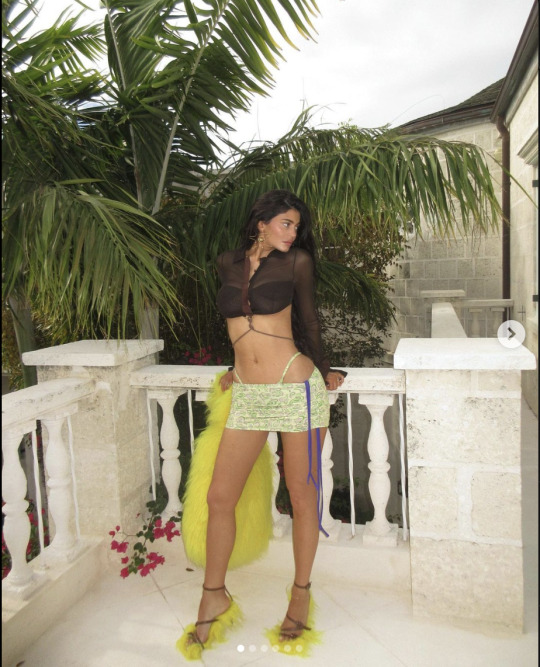
Additionally, extra work is put into posts through posing, angles and even photo editing to achieve the visual beauty standard that the algorithm demands. (Carah & Dobson, 2016, p.8).
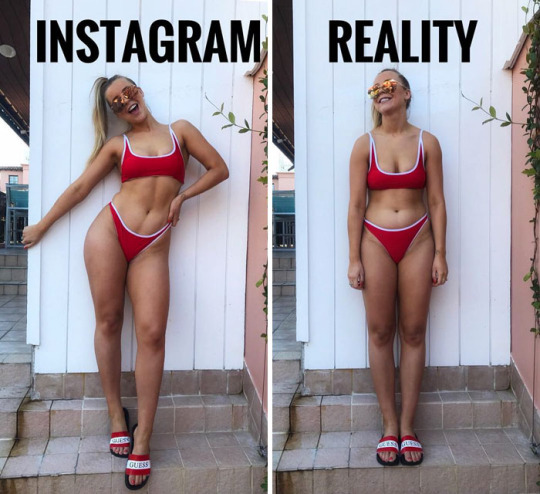
Additional reading investigates sexualization of labor, analysing how this links to social media and the beauty standard, the most relevant towards the issues of the beauty standard being the idea of Instagram ‘hopefuls’, these are described as “aspiring influencers who seek to be affiliated with brands and perform sexualized labor to be discovered” (Drenten et al., 2020, p.50) This idea relates to the topic as it demonstrates there the beauty standard does in fact push people to replicate famous influencers who push the idea of an ‘achievable’ body that really isn’t possible.
This week’s topic was proven to be extremely relevant through the sheer number of examples in which the beauty standard presents itself in social media, and the amount of people it influences, the algorithm that is pushed by different social media sites is proven to be damaging, not only to those who compare themselves to the perfect standards they are constantly shown, but also to the people who are trying to appease the algorithm’s standards in order to maintain relevance on their platforms.
References
Carah, N & Dobson, A, 2016, ‘Algorithmic Hotness: Young Women’s “Promotion” and “Reconnaissance” Work via Social Media Body Images’, Social media + society, SAGE Publications.
Drenten, J., Gurrieri, L., & Tyler, M. (2020), ‘Sexualized labour in digital culture: Instagram influencers, porn chic and the monetization of attention’. Gender, Work, and Organization.
0 notes
Text
WEEK 6, SLOW FASHION AND SOCIAL MEDIA THRIFTING
This week's point of discussion was the ‘slow fashion’ movement, explained in the weekly reading as “the need to adopt sustainable performance and a change in core values in the fashion industry” (Domingos, p.1) the term branches out into multiple areas that link with social media.
The slow fashion movement is a direct combatant of fast fashion, which is a business model that seeks to “produce the most amount of fashionable and trendy apparel in the shortest amount of time” (Ting Chi et al, p.101).
The biggest contributors to fast fashion are companies such as Shein and Zara, which have been exposed numerous times to have poor working conditions and wages in order to mass produce clothing that can be sold for cheap.

Where does social media come into slow fashion? TikTok holds a massive number of creators who popularise thrift store ‘hauls’, putting out videos that display items they’ve purchased from thrift stores as a way of promoting slow fashion. On TikTok, #thrifting has over 8.3 billion views
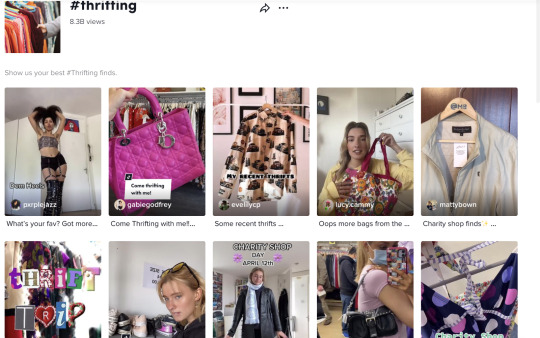
Once again returning to the topic of the influencer, a commonly provided example was Emma Chamberlain, a YouTube and Instagram influencer who found popularity in posting videos about thrift store hauls, this in turn reaches out to her large audience, promoting slow fashion and influencing them to do the same.
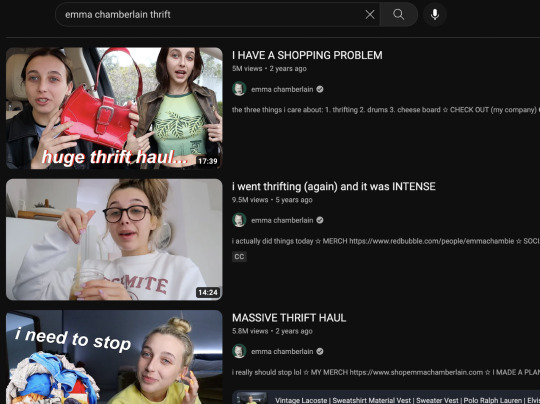
Despite giving thrift stores a type of ‘trendiness’ amongst youth on social media, this also appears to create a form of commercialisation, in where resellers on platforms such as Depop are seen buying up large amounts of thrift store clothes in order to make money reselling, defeating the purpose of the stores as a place where low socioeconomic people can shop for clothing.
Sources
Domingos, M, Vale, VT & Faria, S 2022, ‘Slow Fashion Consumer Behavior: A Literature Review’, Sustainability 14, no. 5: 2860.
Chi, T, Gerard, J, Yu, Y & Wang, Y 2021, ‘A study of U.S. consumers’ intention to purchase slow fashion apparel: understanding the key determinants’, International journal of fashion design, technology and education, 14:1, pp. 101–112.
0 notes
Text
WEEK 5 - DIGITAL CITIZENSHIP AND HASHTAG ACTIVISM
The term digital citizenship is one that is widely debated and discussed, many theorists have different definitions of the idea, and it can be seen as an overarching term for different things, though the weekly readings give a general description that “the concept of digital citizenship focuses on online participation and civic engagement.” (Choi, Cristol, 2021, p.362)
As discussed in previous tutes, hashtags are a widely important part of social media with multiple functions, the additional readings expand on the relevance of the hashtag in reference to digital citizenship and activism.
Yunhwan and Lee (2022, p.1) maintain that the relevance of social media as a platform is due to “functions that make it possible for users to communicate with others in an easier, faster and more diverse way”. The hashtag has been adapted by users who wish to spread awareness in pursuit of social change.
The reading introduces #ShoutYourAbortion as a prevalent example of a hashtag movement, which gained a lot of traction after a woman shared her experiences with having an abortion, destigmatizing a topic that was surrounded by controversy. This example is a form of digital activism, where a group of users are latching onto a movement in one public sphere, allowing for connectivity through the hashtag. Relating back to the participation and engagement of digital citizenship, each user taking part in movements through hash tagging and activism is an example of digital citizenship.


While the idea of digital citizenship may be hard to define, it is made clearer through the case study of hashtag movements and activism, it is an example that provides hundreds of people coming together and interacting politically to evoke change. It is a topic that is still relevant today and continues to give digital citizens a platform to discuss and educate others.
References
Choi, M & Cristol, D 2021, ‘Digital citizenship with intersectionality lens: Towards participatory democracy driven digital citizenship education’, Theory into practice, vol. 60, no. 4, Routledge, Columbus, pp. 361–370.
Kim, Y & Lee, S 2022, ‘ShoutYourAbortion on Instagram: Exploring the Visual Representation of Hashtag Movement and the Public’s Responses’, SAGE open, vol. 12, no. 2, SAGE Publications, Los Angeles, CA, pp. 2 – 13.
0 notes
Text
WEEK 4 - REALITY TV Reality TV was the topic of this week. It refers to a type of television that seeks to create discussion through its portrayal of human interaction. Fans engage with it through several ways, many of which relate to social media.
Online engagement started through forums and blogs, there are many ways in which viewers engage with the show, the most basic engagement is getting into the drama and rooting for certain people to come out on top, then fandoms, which get really into the show, creating their own pieces of media as appreciation, there are also many viewers who tune in as a form of hatewatching.
Audiences create enjoyment comedically out of watching and criticising reality TV. This in turn produces another layer of interaction with the program, for example, Australian comedian Jordan Shanks has plenty of YouTube videos where he reacts to and makes fun of different TV shows. This in turn spreads the show's influence.

Live tweeting is an especially important part of engagement with reality TV, Stewart (2020, p.354) refers to the term “second screening” when discussing live tweeting, explaining it as “the use of a companion/secondary device while watching television”. Audience members use their phones while watching, to live tweet about the program they are watching, taking part in a communal engagement with other viewers of the show.
The Twitter hashtag concentrates thousands of opinions and discussions into one public sphere, making the format especially popular as it unites each viewer of the show in some great event. Producers are aware of the importance of live tweeting, and play into it, by having selected tweets appear on screen during the show, encouraging audience interaction.

In recent years there have been a number of reality TV shows that have been produced by streaming services, showing a change in the trends of reality tv, streaming services have attempted to cash in on that interest, for example, The Kardashians, demonstrating a reality tv show, moving to one specific streaming service.
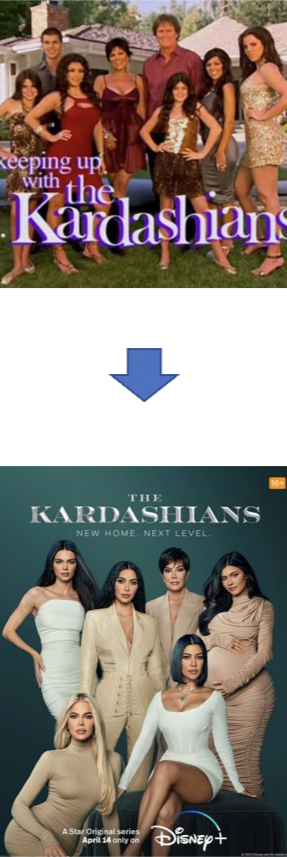
Many reality tv stars use their time on the show as a way of cultivating fame on social media, transitioning into a type of influencer, this is due to the fact that “Social media provide stars with an unmediated forum for self-representation and, with it, the ability to control the construction and circulation of their image” (Arcy, 2018, pg.490).
Reality TV is an extremely popular genre of television and through research it's clear that social media plays into its success through many ways, while the future is unknown it is argued that it will not lose its dominance and the two will continue to interact and create audience engagement.
REFERENCES
Arcy, J, 2018, The digital money shot: Twitter wars, The Real Housewives, and transmedia storytelling
Deller, Ruth A, 2019, Reality Televison: The TV Phenomenon that Changed the World, Emerald Publishing
Stewart, M, 2020, Live Tweeting, Reality TV and the Nation, International Journal of Cultural Studies
Psarras, E, Stein, K & Shah, P, 2021, ‘“You’re not here for the right reasons!” From The Bachelorette to Instagram Influencer’, Feminist Media Studies
0 notes
Text
Week 3 – Tumblr Feminism and Body Positivity
This week’s tute and readings discussed the idea of Tumblr as a digital community for feminism and body positivity, while Tumblr does not appear as prevalent as social media such as Instagram and Twitter, it is actually the 10th most populous social media site in Australia, with 3.7 million users
Tumblr is seen to differentiate from those other websites in the way its users post and interact, Rief states that Tumblr "sets the pre-conditions for a diverse and empowering feminist community" (Reif, Miler, Taddicken, 2022, p.6), in that it is more welcoming of sexually suggestive and NSFW content, where on other platforms, users can encounter abuse online. Tumblr is seen as more of a “safe space�� due to its anonymity and the fact that “there are no personal profiles or networks of ‘friends’” p.7), allowing those less represented to feel a part of a digital community.
While in the first lectures we’ve discussed the importance of the Twitter hashtag, Tumblr was one of the first sites to use this function, and it is integral in its system, users can hashtag their posts, all of which are no more visible than any other users' posts, reinforcing the idea of a digital safe space where all users are equal.
The Tumblr hashtag leads to the #bodypositivity movement, the importance of such a hashtag and how it links to feminism is that it “may help to make diverse forms of femininity and body types more visible” (Reif, Miler, Taddicken, 2022, p.4). This pushes the idea that women of all body shapes and types deserve to be equally represented, celebrating every type of body.
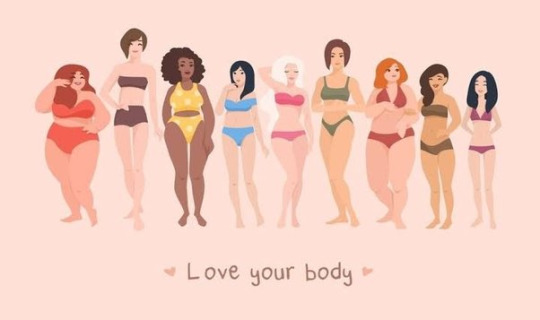
Expanding on feminism in Tumblr, body positivity is not the only topic that is frequently addressed, users engage in feminist topics such as sexism, queerness and rape culture, it was described in the additional readings as a platform in which “many girls felt that they could discuss these topics more freely on Tumblr without fear of trolling.” (Keller, 2019, p.8) This idea is reinforced by Tumblr’s safety and freedom for people to engage. It proves to be an extremely relevant digital community for culminating positivity and bringing together those wishing to discuss topics considered taboo and may face criticism on other forms of social media.
References
Anne Reif, Insa Miller & Monika Taddicken, 2022 “Love the Skin You‘re In”: An Analysis of Women’s Self-Presentation and User Reactions to Selfies Using the Tumblr Hashtag #bodypositive, Mass Communication and Society, pp.1-11.
Keller, J 2019, “Oh, She’s a Tumblr Feminist”: Exploring the Platform Vernacular of Girls’ Social Media Feminisms”, Social media + society, vol. 5, no. 3, SAGE Publications, pp. 1-11.
1 note
·
View note